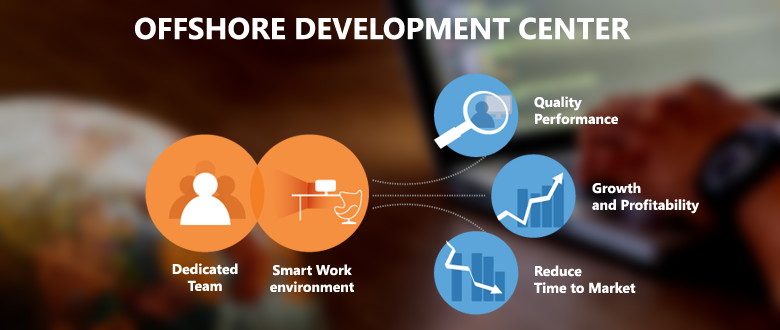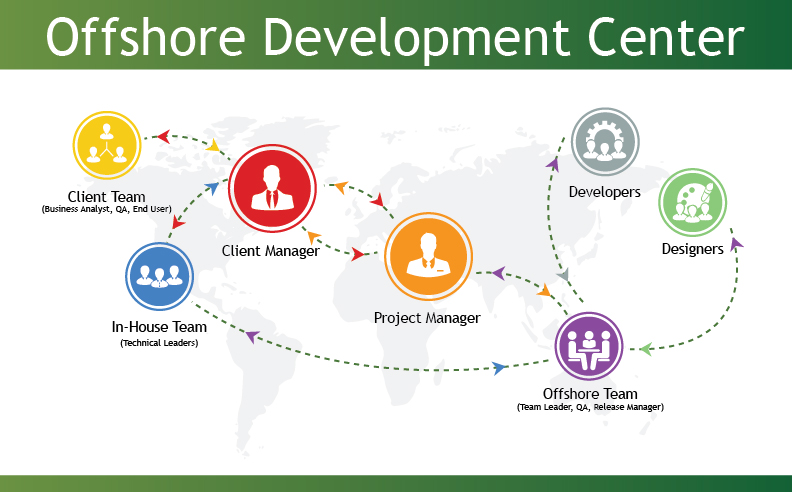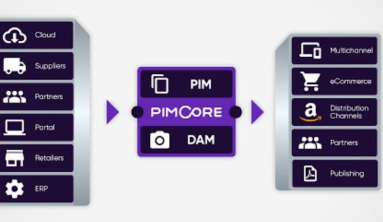Everyone is talking about the talent shortage in the U.S., especially in regards to how difficult it is to find and hire the right people for the job. Coupled with rising wages and independent contractor rates, it can be difficult to find the right talent in the U.S.
Offshoring has drawn its share of criticism in the past — but could it be the solution to finding the right talent amid a shortage in the U.S.?

The answer is yes, especially when it comes to finding top-tier talent in software development. Statista shows software development to be the most common IT role offshored. Offshore software development takes advantage of a global tech talent pool that often provides highly skilled workers at less-prohibitive costs.
If you are having problems keeping the development pipeline flowing or just find you need to quickly pivot in a different direction, hire offshore developers to quickly ramp up operations without breaking the budget.
Learn all about the benefits of fantastic offshore developers and where to find them. This post shows you the advantages and disadvantages of offshoring your software development. Then it details why you should consider hiring offshore software developers and how to decide where in the world you should look to find the right talent.
Advantages of Offshore Software Development
Offshoring enhances every facet of finding workers, including:
- Cost
- Speed of hiring
- Talent access
Software development is a game of speed where you don’t always have the luxury of a long talent hunt or training time. You need what you need at the moment.
Spending weeks looking for the right developer is also hard on your bottom line. Every day that position goes unfilled is a non-productive day. You lose out on projects and have trouble completing the ones you start, which ultimately harms your profits and overall productivity.
Cost-Effectiveness
The primary reason startups fail is that they run out of money. Larger development shops also try to run as lean as possible, so spending too much on development talent compromises that standard. A global talent search opens the doors to a vast talent pool that are equally — if not more — qualified for the task at hand.
Most offshore developers live in a country where the cost of living is lower than the U.S., so they can work for lower rates than most developers in America and Western Europe. Less expensive translates into more cost-effective.
Wages are not the only line-item offshoring reduction. You spend less on overhead costs as well. You have less need for office space, saving on rents and leases. You don’t have to pay as much on recruitment fees — if any. And not only is payroll lower, so is your cost for insurance benefits.
All this to say that hiring offshore developers mitigates much of your financial risk. You can hire a dedicated software team from India, Eastern Europe, or Latin America for two to three times less money than a U.S. team. With all the savings, you can direct funds to your most critical issue — creating a minimum viable product (MVP) or completing a huge software development project for your organization.
Access to Talent
The bigger the talent pool, the more high-quality talent you can find. Your on-site talent pool is limited by geography. Hiring globally opens the gates to a vast selection of developers, many of whom have the exact skills you need.
For example, in California, most developers are already employed by one of the giant tech companies in Silicon Valley. They have Cadillac benefits that you may not be able to match, and they are comfortable where they are. If your company looks like a higher risk, you’ll find it difficult to dislodge them to come and work for you.
Hiring someone to relocate on top of the need for a higher wage to live in the area can put a dent in your payroll wallet. However, most of those concerns fade away if you hire offshore developers in Asia, Eastern Europe, or Latin America. That leaves very few would-be employees thin on the ground. They would be happy to join your company without relocating or asking for sky-high compensation.
Faster Hiring
How long does it typically take you to hire an in-house developer? Even after you select the few candidates you wish to interview, the process can stretch for weeks, if not months, while you make your selection and onboard the new team member.
Offshore hiring can be done by accessing a talent platform with workers who have already been vetted. Someone else takes on the task of checking certifications and work history. Such talent platforms immediately reduce your risks of making a poor hire.
You spend less on onboarding because these workers are contractors, and you don’t pay for benefits or screening. They are ready to work from the moment you hire them.
Easy to Scale
If you are a small to medium business (SMB), it can be challenging to find skilled talent quickly and cost-effectively. It’s difficult to suddenly scale up or down with an in-house team. Hiring offshore development talent eliminates that issue.

You can hire as many developers as you need quickly and for short-term contracts. At the end of the project, you can reduce your overhead without going through layoffs or a firing process.
Disadvantages of Offshore Software Development
There is a downside to everything, and offshoring is no exception. However, the advantages of offshore hiring outweigh the disadvantages — and most issues can be resolved with a bit of thought.
Time Zone Differences
If your offshore team is in a wildly different time zone from you, it can be difficult to synchronize time for both in-house and offshore teams to be online. It’s hard to hold a scrum meeting when half your people are asleep.
If time differences are a big problem, fear not. Consider that the Latin American countries to our south are in the same or similar time zones as the U.S. If you hire developers from Brazil, talent in the western part of the country operate in the equivalent of Eastern Standard Time (EST) for the U.S. Hiring from western Brazil eliminates the issue if your company is in New York, Atlanta, or Florida. Even if your company is in the mid- or western U.S., there may only be a two- to three-hour difference — which is still very manageable.
Another way to turn time differences to your advantage is to consider countries that are a little ahead of you on the clock. The developers have been at work for hours before you are on the clock. They can have work for you to review the minute you start your day.
If you hire developers in time zones behind you, things get trickier. The hours-long lag can disrupt the workflow. However, you can make it easier all around by using a modern time zone management tool to overcome your challenging clock.
Cultural Differences
Don’t overlook the issues cultural differences can make in team cohesion, productivity, and efficiency. Just because Americans like to work at a breakneck pace or follow agile development methods doesn’t mean someone from another country is ready to follow suit.
The first thing to learn is the difference between a low-context culture and a high-context culture.
The U.S. and Europe are low-context cultures.
- People rely on words and facts to communicate ideas.
- Everyone is very task- and deadline-oriented.
- People value logic and are open to changes.
- Most software development is based on the agile method.
Many of the Asiatic countries, including China, India, and the Philippines, are high-context cultures.
- People rely on trust and emotion when communicating ideas.
- They are team-oriented, not deadline-oriented.
- They tend to be intuitive rather than logical and can be resistant to change.
- Software development tends to be based on waterfall methodology.
You need everything to roll smoothly. The conflict created due to cultural differences can cause misunderstanding. Your work will stall or be littered with errors. Make sure to take cultural norms into account when you hire offshore.
Saturated Vendor Space
Who should you choose to help you find an offshore developer or team? There are thousands of agencies offering software developers all over the world. You may spend excessive time vetting agencies through various platforms and still select the wrong vendor. Who can you trust?
Reach out to your network. Find out which vendors other development shops rely on for high-quality workers. Ask what obstacles they encountered when hiring them. You are not the first to be in this position. Leverage the knowledge others have gleaned — especially the hard lessons — to determine the most appropriate way to find the talent you need.
Less Face Time
If the pandemic showed the world anything, it’s that speaking face-to-face is more valuable than we thought. Even teleconferencing couldn’t replace in-person conversations.
Hiring a remote worker places one barrier between members of the team. Hiring offshore talent can create another. There are ways to help things along, however.
Video conferencing is still suitable for relationship building. Hold regular meetings on-screen and begin with small talk instead of diving right into the latest development problem. It creates a feeling of camaraderie if everyone can relax enough to chit-chat a bit.
If you can manage, also consider visiting your offshore team occasionally to give them a person from your company to bond with. You can break the ice and spend some time with them so everyone has a better idea of how the team collaborates and communicates.
Traveling is still much less expensive than the money you can lose from making hiring mistakes or keeping all your work in-house.
Why You Should Offshore Software Development
There are several reasons for offshoring software development, some of which we alluded to above. Now let’s take a more in-depth look.
Get to Market Sooner
Offshoring speeds up your development timeline. You have a broader pool of talent to pick from and a better chance of finding someone who has room on their schedule to work for you. With a global reach, you have a better chance at finding the best and the brightest while still reducing your payroll.
Getting to market faster also accelerates your return on investment (ROI), giving you a competitive advantage.
Offshoring development also means fewer employees to train. You can find developers who can jump right in and start coding your project instead of sitting around in onboarding or taking a class to brush up on a particular language. You’re sure to find many developers competing for the same positions that already have the skills you need.
Also, going through an offshoring vendor saves time on project management and HR activities like employee retention. The vendor is responsible for all of that — all you need to do is focus on the work.
Decrease Risk
Software development requires extreme attention to detail plus a set of high-level skills. Your in-house team may not have either of these capabilities, at least not in the combination the project requires.
Poor development skills can result in liability for your company since those errors can be expensive. With an offshore team, you have your pick of excellent talent who can meet your needs without constant rework and less liability.
Maintain Flexibility
Scaling an in-house team quickly is next to impossible. You already know hiring a single developer can take forever. You don't have time for that when several projects hit your desk at once. If you are a startup, you need to scale quickly — whether up or down. This can make a difference between your business's success and failure.
Outsourced developers have the flexibility to move between projects, especially if they can collaborate via a development shop. All you have to do is decide whether you need long-term or short-term developers or if you need a full team for a specific project.
Then you can find the developers that match your needs to come on board and start work. You might even find a few developers to integrate into your in-house software development team without a considerable hiring lag.
Leverage Cutting Edge Technology
Most organizations can't maintain continuous upgrades for their in-house software development. Even when you get something new, you have to wait for your team to be trained on it.
Employers expect talent matching agencies to be reliable and up to date, so they typically invest in the most effective tools for development. Also, they want to stay current on technology to better serve their clients.
Your company doesn’t need to expend any of your budget on new tools.
Common Destinations for Offshore Development
Many people automatically think of South Asia when it comes to finding talent with offshoring software development. A high percentage of development work indeed comes from China, India, and the Philippines.
However, Eastern Europe and Latin America have gained enormous ground over the years. Now they have some of the biggest pools of developers you can find.
Despite their stereotyping as low-tech countries, Belarus, Ukraine, Poland, Romania, Bulgaria, the Czech Republic, Hungary, and Moldova are hotbeds for advanced software development talent.
If you want someone in a closer time zone for lots of communication access, look no further than Latin America.
Nearshoring, the use of countries close to a given business’s base, is a popular method of reducing the time difference and the distance between the offshore team and your in-house developers and project managers. Most U.S. nearshoring includes Canada, Mexico, and Latin America — particularly Brazil, Argentina, and Panama. South America has been performing its due diligence and is building a high-quality talent base that makes it ideal for offshoring.
Why Latin America Is The Best for Offshoring
Nearshoring in Latin America provides several benefits:
- A better time zone overlap with the U.S. to improve productivity
- Geographic proximity: You don’t have an ocean between you and your team
- Cultural similarities: LATAM prioritizes English proficiency within its borders
- Many students go to Brazil and Colombia for IT and software development education
- Argentina and Nicaragua are concentrating on building English language skills among the population
- Several South American governments sponsor national and government programs to drive software development
In terms of cultural cohesion and collaboration, nearshoring to a Latin American country can bring a lot to the table with fewer misunderstandings and less culture shock.
How to Hire Offshore Developers
Before you dive into hiring any outsourced software development talent, you have some preparation to do.
Define Your Business Goals
What are your goals for any project? The better you can define your goals, the easier it becomes to decide on the best talent.
Identify the problem you hope to solve with your MVP or your latest software product. Identify the primary solution and goal the product is to fulfill. Be ready to communicate those goals to any outsourcing vendor you use.
Now, take your project and break it into smaller, measurable milestones. Once you know what needs to be done, decide when it needs to be done. Set your deadlines for each milestone.
Evaluate the Skill Set You Need for the Project
Every project is different and may require a different language, type of coding, and other variables you need to identify before you hire.
Define the roles you need for your project, including:
- Developers
- Project managers
- Business analysts
- Quality assurance testers and verifiers
Remember the soft skills required for a smooth collaboration. Your offshore team needs good communication and problem-solving skills to keep your project on track.
Plan Your Budget
How much initial capital will you need, and where can you save money? Don’t cut corners on the important stuff. If you need to wow investors, find those who will look at your MVP before you go to the trouble and expense of hiring a development team.
Collect Information About the Offshore Location
You have a long list of countries to choose from. Make your shortlist and the final selection after considering the best price to quality ratio for developers.
Also, you may wish to consider how the country is doing politically at any given time. Some countries could go through a period of instability that could disrupt your project.
Create a Detailed Job Description
List the functionality of your project, then identify the right skills needed to bring it to fruition. You should have a good idea of what you need by defining your primary business goal and performing your project planning.
Check the Outsourced Team of Developers for a Proven Track Record
Leverage online tools like Clutch to find rankings for various developers, shops, and teams. For individuals, you can look for a LinkedIn profile.
Find out which clients the developer in question has worked with and contact them if possible. Ask for recommendations for a particular team or developer.
If you are charged with hiring and are not a technical person, make sure you have a tech advisor dedicated to your selection process. Otherwise, hire an IT consultant.
Finally, make sure security is a high priority for the individual or team before signing a contract.
Get Access to the Latest Code
Some developers refuse to release code for one reason or another, whether it’s personal conflicts or an issue with how the job is done. You should always be able to access the code for your project.
Make code access your second priority for project participation. You should be the owner or administrator of all related accounts where code may be stored, such as Github, TFS, a cloud service, or other platforms.
Ask the Outsourcer About Workflow
As part of the search process, determine how a developer likes to interact with clients. Do they prefer video conference, email, text, or phone? When are they available for interaction?
Also, if you are using an outsourcing vendor, how do they allocate developers to a project? You don’t want to use a vendor that can’t get you the developers you need on a timely basis. Being eternally on a waiting list for a developer wastes your time and money.
How many developers can they devote to your project? If you are scaling up for a big project, you need to know they can cover it.
As part of the contract, ensure you have a non-disclosure agreement (NDA) before work ever begins. An NDA helps you enforce your intellectual property (IP) rights. Your competitive edge is gone if someone leaks your code.
Don’t Go For the Cheapest
The lowest rate isn’t always the best rate. You get what you pay for.
Focus on cost-efficient rates instead. If you go with the cheapest labor, you are likely to spend all you save on the rework of poorly written code. Always check a developer’s StackOverflow or Github profile to review code quality. Make a thoughtful, well-considered choice according to how much you can pay and the level of quality that money can buy.
You don’t want to pay a high price for low quality, or try to scrape by for as little as possible when you can invest more in a better talent fit.
Make Sure You Have an Agreement
Making sure you have an agreement may sound like overkill, but it pays to check these details. For one thing, some cultures don’t like to say, “No.” Anything you ask for, they will say yes. Even if it isn’t cultural, always be wary of someone who claims they can meet your every single need — no matter how big of an ask it may seem. That is a huge red flag, no matter where you hire.
They may tell you they can do everything without going over your needs thoroughly to see if they can align their skill sets. No web development shop can do everything. Each tends to specialize in different skill sets.
Ensure you have proper, clear communication before diving into a project.
Use a Good Project Management Tool
Collaboration is the name of the game, and project management tools give you the edge. You don’t want to exchange lengthy emails or have all your discussions via text. You need a way to track every step and milestone without forgetting anything or losing data.
You have plenty of tools to choose from. Slack, Jira, Trello, and others are available for free or at a low cost. You can monitor everything and have the transparency you need to ensure everything is running as it should, and identify if any problems have arisen.
Be Proactive
You are much better off a step ahead of your team, especially for offshore development. If they're in a timezone ahead of yours, make the best use of the clock by having them do the work while you sleep. Then while they are sleeping, review the code and draw up instructions for the next period.
As the employer or project manager, if you get behind or work on the same steps as the team, you may find yourself backed up with no wiggle room if problems occur. If you are ahead of the game, you can scope out potential issues and mitigate them before they stop your developers from working.
Require Frequent Deployment
The developer shouldn’t hold back until everything is complete. At the least, you need a demo of the software at the end of every sprint, which will be weekly or bi-weekly. Nip problems in the bud before they are immortalized in code.
You don’t have time to go back and rework everything.
Finding Offshore Talent and Vendors
As we mentioned above, thousands of agencies and vendors are available to help you offshore your development needs. Ask for recommendations from people you know. Network at conferences, meetings, and hackathons. Look through freelance portals or tech talent marketplaces. Ask recruiters where they find their offshore talent or use the services of an outsourcing company.
Or you can cut to the chase and contact an offshore talent matching company.
Whichever way you go, be sure that the agency or developer understands your instructions and assignments. Let them know it's OK to ask questions. It doesn't indicate ignorance. They need to understand your business or industry to be effective when developing your project. Ask them for at least one similar project from their portfolio.
Lastly, have they worked with your type and size business before?
Offshore Talent Platforms
Many companies create talent marketplaces that connect technology companies in the U.S. with pre-vetted remote software developers and engineers.
These platforms partner with hundreds of companies to help them scale their development teams quickly and cost-efficiently.
Conclusion
Software development is fast and can be daunting. You need to find people with the right skills quickly when you have deadlines to hit. Offshore software development provides numerous advantages, including cost-effectiveness and the ability to scale quickly. You can select from a broader pool of talent, and may even find your next developer rockstar for in-house collaboration.
Source: revelo






